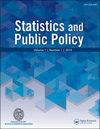What We Learn From Unusual Cases: A Review of Azari and Gelman's “19 Things We Learned From the 2016 Election”
IF 1.5
Q2 SOCIAL SCIENCES, MATHEMATICAL METHODS
引用次数: 1
Abstract
No one needs to be told that 2016 was an unusual election year. For social science, its strangeness has two implications. First, it is a learning opportunity. Whether we think of 2016 as a highleverage case or as off the equilibriumpath, an unusual case gives perspective that we do not usually get to see. This is the potential that Julia Azari and Andrew Gelman have exploited. Second, however, is that unusual cases are, well, unusual. They are often outliers. They differ onmultiple dimensions, and we may not know why they came about. Lessons from them may not generalize. The election of 2016 was unusual or even unprecedented in so many ways. Not only do we want to be cautious about extrapolation, but the way we learn from outliers is different than the way we learn from typical cases. They can function asmuch as counterfactuals as cases, unless, of course, we think they are harbingers of a new normal. It is notable how many of the things Azari and Gelman note we learned from 2016 were things that at least some social scientists had already articulated. And I would argue that many of the othersmay not be as large as they are portrayed here. Despite the outrageousness of the 2016 election in so many ways, its lessons are mostly modest revisions of well-established work or raising still unanswered questions about less-established work. I think Azari and Gelman would agree. Most of their points comewith caveats that predictmy reactions. I think if we amplify the caveats over the initial points, we get a very different thesis. The 2016 election was a strange one, but one that can be explained fairly well by existing social science theory, once we know the parameters.With this inmind, a few reactions to some of the points raised by A&G.我们从不同寻常的案例中学到了什么:阿扎里和盖尔曼的《我们从2016年大选中学到的19件事》综述
不用说,2016年是一个不寻常的选举年。对社会科学来说,它的陌生性有两个含义。首先,这是一个学习的机会。无论我们认为2016年是一个高杠杆案例,还是一个偏离均衡路径的案例,一个不寻常的案例给了我们通常看不到的视角。这就是Julia Azari和Andrew Gelman所开发的潜力。其次,不寻常的情况就是不寻常。他们往往是异类。它们在多个维度上不同,我们可能不知道它们为什么会出现。从中吸取的教训可能不能一概而论。2016年的大选在很多方面都不寻常,甚至是前所未有的。我们不仅要谨慎外推,而且我们从异常值中学习的方式与从典型案例中学习的方式也不同。当然,除非我们认为它们预示着一种新常态,否则它们既可以作为反事实的证据,也可以作为案例。值得注意的是,阿扎里和格尔曼指出,我们从2016年学到的东西中,有多少是至少一些社会科学家已经阐明的东西。我想说的是,其他许多人可能没有这里描绘的那么大。尽管2016年的选举在很多方面都令人愤慨,但它的教训主要是对已有的工作进行适度的修改,或者对不太成熟的工作提出了尚未解答的问题。我想阿扎里和格尔曼会同意的。他们的大多数观点都带有预测反应的警告。我认为,如果我们在最初的观点上放大这些警告,我们会得到一个非常不同的论点。2016年的大选是一场奇怪的选举,但一旦我们知道了参数,就可以用现有的社会科学理论很好地解释它。带着这样的想法,我来谈谈对A&G提出的一些观点的一些反应。
本文章由计算机程序翻译,如有差异,请以英文原文为准。
求助全文
约1分钟内获得全文
求助全文
来源期刊

Statistics and Public Policy
SOCIAL SCIENCES, MATHEMATICAL METHODS-
CiteScore
3.20
自引率
6.20%
发文量
13
审稿时长
32 weeks
 求助内容:
求助内容: 应助结果提醒方式:
应助结果提醒方式:


